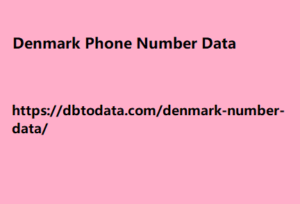|
|
It is called a database where you can access any student's information. Facts about Database: Databases have evolved dramatically since their inception in the early 1960s. Some navigational databases such as hierarchical databases and network databases were the original systems used to store and manipulate data. Although these early systems were truly inflexible In the early 1980s, relational databases became very popular, followed later by object-oriented databases. More recently, NoSQL databases emerged as a response to the growth of the Internet and the need for faster speed and processing of unstructured data.
Today, we have cloud databases and self-driving databases that are breaking new ground in how we collect, store, manage, and use data. Note: Data is exchangeable. Let's see how a database is created. How to create a database? We use the CREATE DATABASE statement Denmark Phone Number Data This makes San Marino not only one of the smallest countries in the entire world but also one of the oldest. Additionally, San Marino is one of only three countries in the world that is completely surrounded by another country, the other two being Lesotho in South Africa and Vatican City in Italy. Despite being so small, San Marino boasts a high quality of life that is comparable or better tha to create a new database. Syntax 1 > CREATE DATABASE databasename; 01 Example : 1 > CREATE DATABASE College So a database named college will be created. This way you can easily create a database. How many types of databases are there? database components The major components of the database are: Hardware It consists of a set of physical electronic devices such as I/O devices, storage devices and many others.

It also provides an interface between computers and real world systems. Software It is the set of programs that are used to control and manage the overall database. It also includes DBMS software. Operating systems, network software used to share data between users, application programs used to access data in the DBMS. data Database management systems collect, store, process, and access data. Databases contain both actual or operational data and metadata. database training Process These are the rules and instructions to guide users operating and managing a DBMS how to use the database to design and run it.
|
|